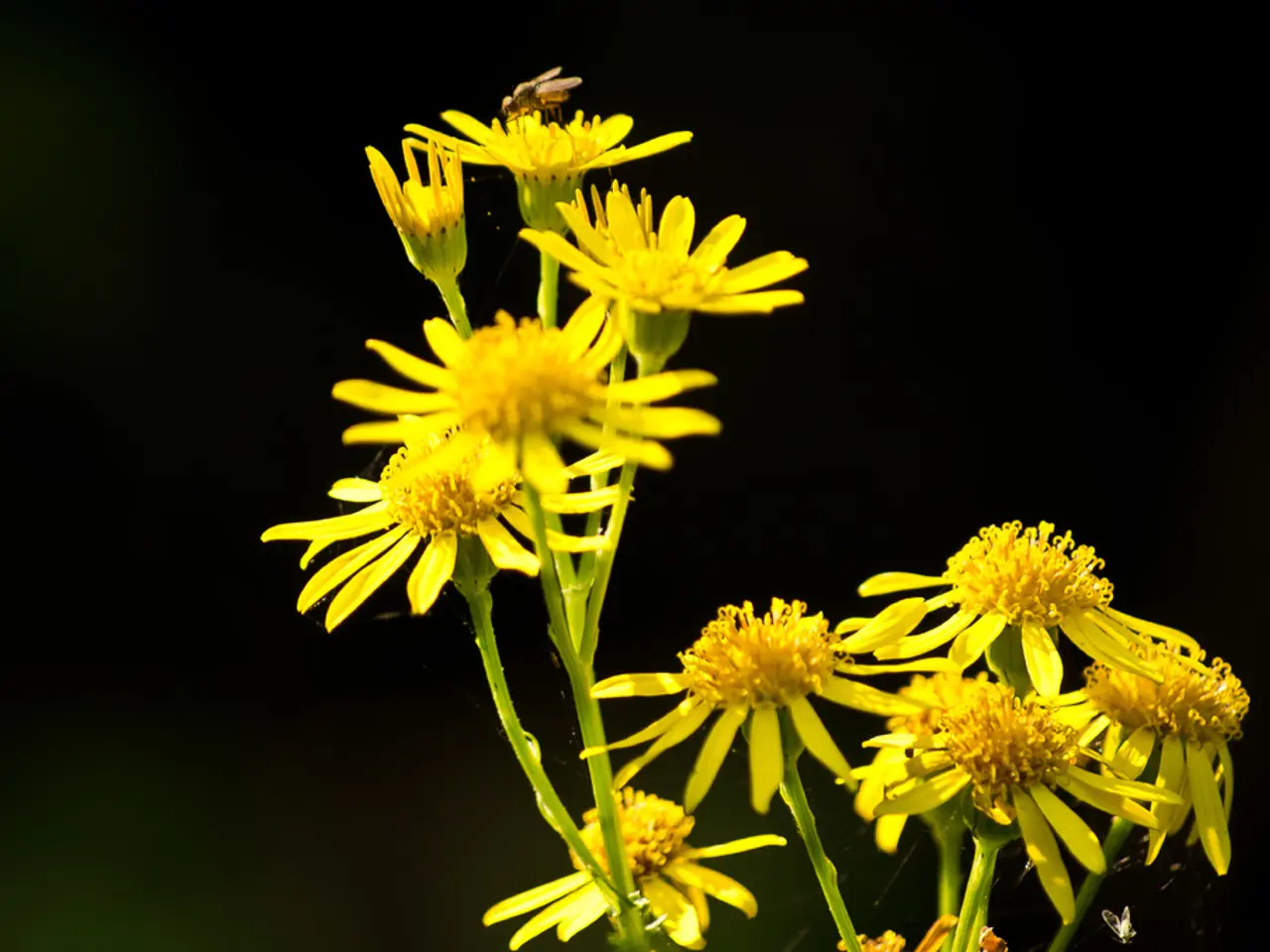Blooming Blossoms for Bees in Early Spring: Nectar Providers for the Season
As winter slowly begins to retreat and the first signs of spring start to emerge, it's essential to consider the needs of our pollinator friends – the bees. With the arrival of fruit tree blossoms still a month or more away, providing early nectar sources can make all the difference for these vital insects.
Bees rely on nectar and pollen to increase their numbers and build up their hives before the summer flowers bloom. One such early nectar source is the humble crocus, which can be planted in large patches to benefit bees. These small, vibrant flowers are among the first flowers of spring and are a welcome sight to both gardeners and bees alike.
Another early bloomer is the February Daphne, a small purple flower that attracts bumblebees and grows in shady, wet spots. These flowers are native to Europe and Asia but are naturalized to the US as an ornamental, making them an excellent choice for many gardens.
In shady areas of lawns, All-heal can be found blossoming, offering a crucial early nectar source for bees. Dandelions, often considered a weed, are also an important food source for bees, blossoming well before most other spring greens.
To help bees even further, consider planting early-blooming species such as crocuses, blue stars (Scilla), grape hyacinths (Muscari), lungwort (Pulmonaria officinalis), snowdrops, winter aconite, hellebores (Christmas roses), and early-flowering wildflowers. These plants offer nectar and pollen critical for bees in early spring.
Black locust trees, with their sweet and fragrant blossoms, can be a lifesaver for bees, blooming when nothing else is available and providing sustenance for two weeks a year. Planting a few apple trees, plum trees, or other fruit trees in suburban areas can also help feed bees and provide food for a family.
It's important to note that bees are active for foraging when daytime temperatures reach approximately 50 degrees Fahrenheit. To ensure they have enough food during the lean season, avoid mowing a lawn until after dandelions start to go to seed. This simple act can help feed a few thousand bees.
By planting early spring nectar sources and making a few thoughtful choices in our gardens, we can help ensure that our pollinator friends have the food they need to thrive in the early spring months. Let's work together to create a bee-friendly garden and support these essential insects in their vital role in our ecosystem.
Read also:
- Impact of Alcohol on the Human Body: Nine Aspects of Health Alteration Due to Alcohol Consumption
- Understanding the Concept of Obesity
- Tough choices on August 13, 2025 for those born under Aquarius? Consider the advantages and disadvantages to gain guidance
- Microbiome's Impact on Emotional States, Judgement, and Mental Health Conditions







